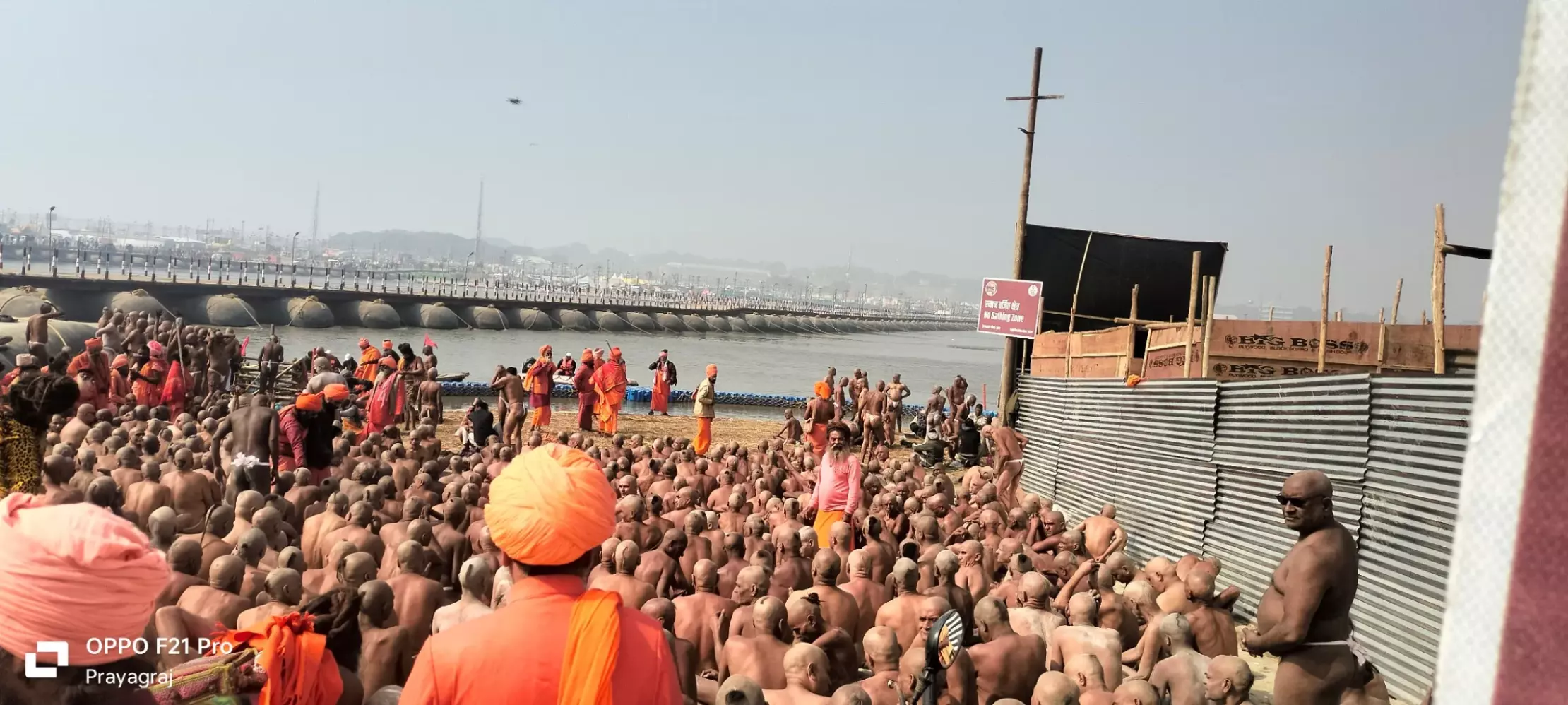
First Glimpse of The Kumbh Mela
The Call of the Maha Kumbh
Bharatvarsh (India) is the land of Dharma and spirituality. Its roots go back thousands of years. Countless ancient scriptures and stories describe the beauty of this sacred land and its people. Since childhood, I have learned about its rich history through books, television series, legendary novels, and the teachings of my parents and gurus (teachers).
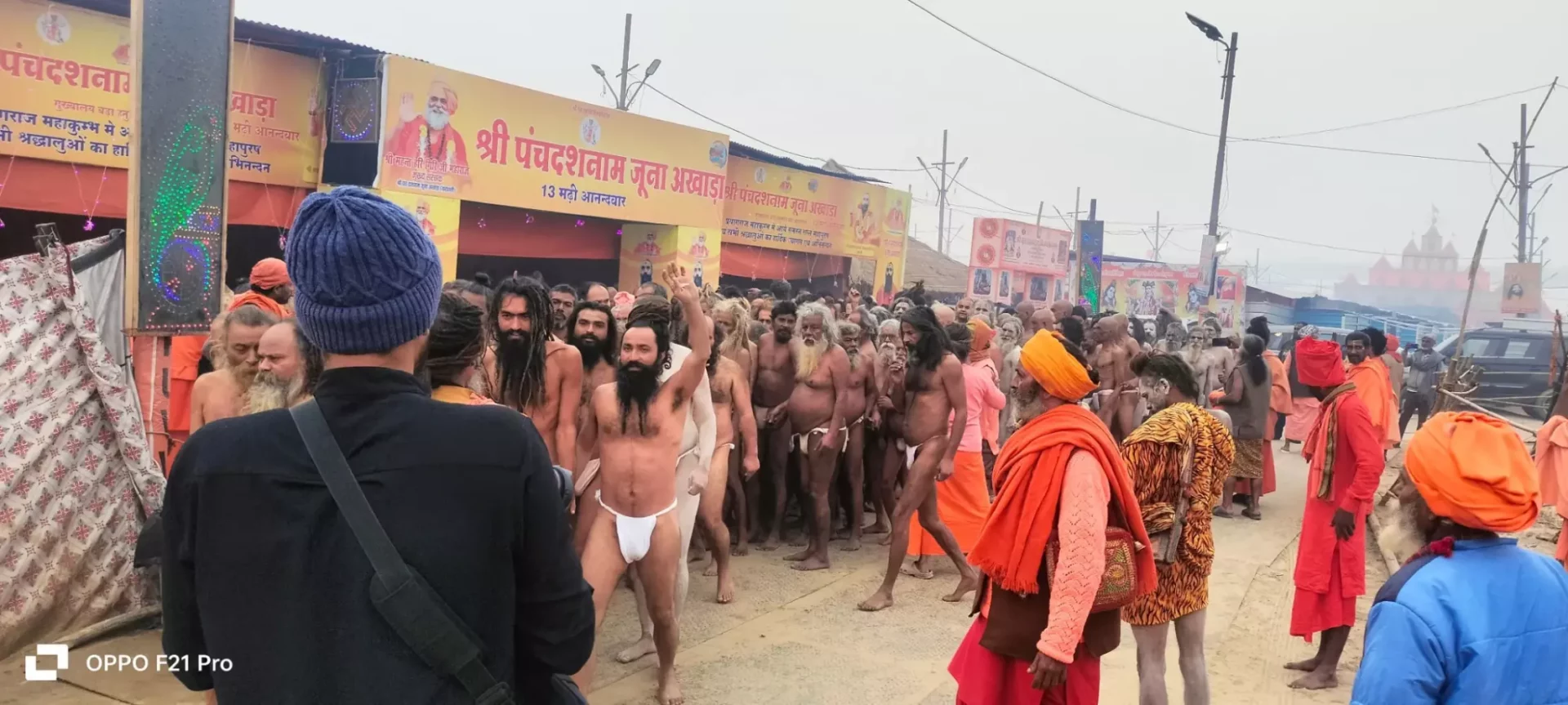
One of the most fascinating events that has always excited me is the Kumbh Mela. According to ancient stories, when the gods and demons needed Amrit Ras (nectar of immortality), they agreed to work together to retrieve it from the depths of the ocean. There is a long story behind why Amrit Ras was needed and how it was obtained, but I will save that for another time. What matters to us (humans) is what happened after the gods and demons obtained the Amrit Ras in a Kumbh (jar).
The legends say that once the Amrit Ras was collected in a jar, the gods and demons argued over who would take the first sip. Since they did not trust each other, the gods decided to escape with the jar. During their chase, four drops of Amrit Ras fell in four different places in Bharatvarsh. These places became sacred pilgrimage sites, and the event of Kumbh Mela began. People believe that visiting these places during the Kumbh Mela brings spiritual blessings for this life and beyond. The Kumbh Mela occurs at these four locations—Prayagraj, Haridwar, Nashik, and Ujjain—every 12 years, based on celestial alignments. The festival usually begins in January (on Makar Sankranti) and ends in February (on Maha Shivratri).
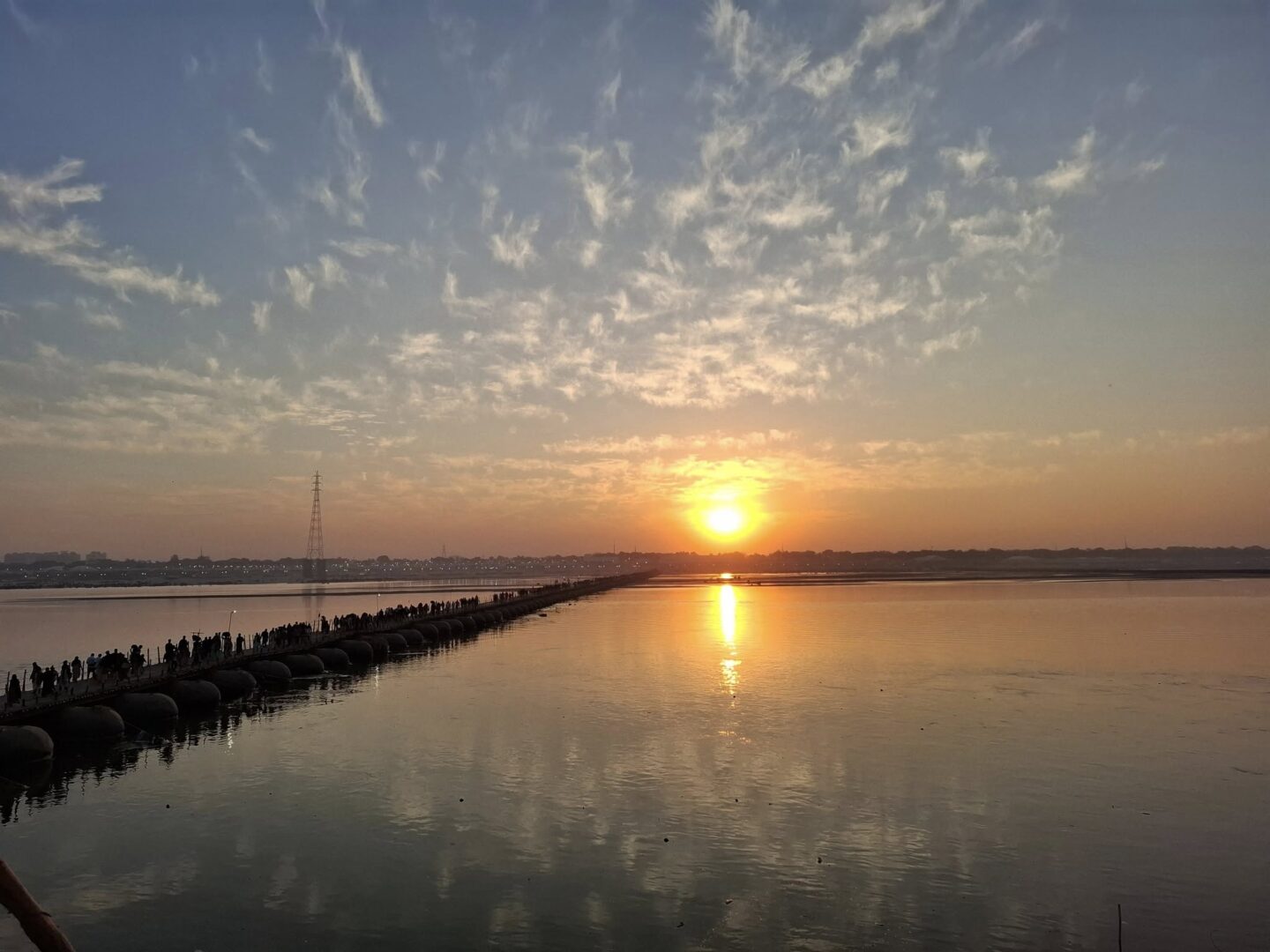
But why is it called the Maha Kumbh Mela? Our ancient scriptures state that after 12 Kumbh Melas (which means after 144 years), a Maha Kumbh Mela is held, making it an even more special event. The reason behind the 12-year cycle of Kumbh Mela is also mentioned in scriptures—Jupiter, or the Guru planet, completes its orbit around the Sun in approximately 12 years.
This year, I was blessed with the opportunity to attend the Maha Kumbh Mela in Prayagraj, Uttar Pradesh. Elders say that only the truly fortunate can visit and take a holy dip with the great Naga Sages at the Kumbh Mela. Over the years, I have started to believe that I am one of those blessed souls. Every time I needed guidance in my spiritual journey, I found a good teacher to show me the way. This time was no different—God helped me find a great Guru who could guide me towards Moksha (liberation) or Nirvana.
With my Guru, I attended the Maha Kumbh Mela and stayed for almost a month. It was a calling I could not ignore, and my family, friends, and colleagues fully supported me in this journey. I was both excited and mentally prepared to be a part of the world’s largest religious gathering. But why mental preparation? Because I prefer quiet places, being close to nature, or being in small gatherings. I knew the Kumbh Mela would be an overwhelming experience, especially the Maha Kumbh Mela, with its massive crowds. I had a blurred picture of the Mela in my mind—now it was time to witness it with clarity, not just with my eyes but also with my intuition.
The Journey Begins
A few days before the Maha Kumbh Mela, I decided to travel on my “Nandi Maharaj” (my motorcycle). Naming my bike “Nandi” has a personal meaning, which I won’t discuss here, but it felt like the perfect name, as agreed upon by my Guru. To prepare for the long journey, I took my motorcycle for a full service, ensuring it was in perfect condition.
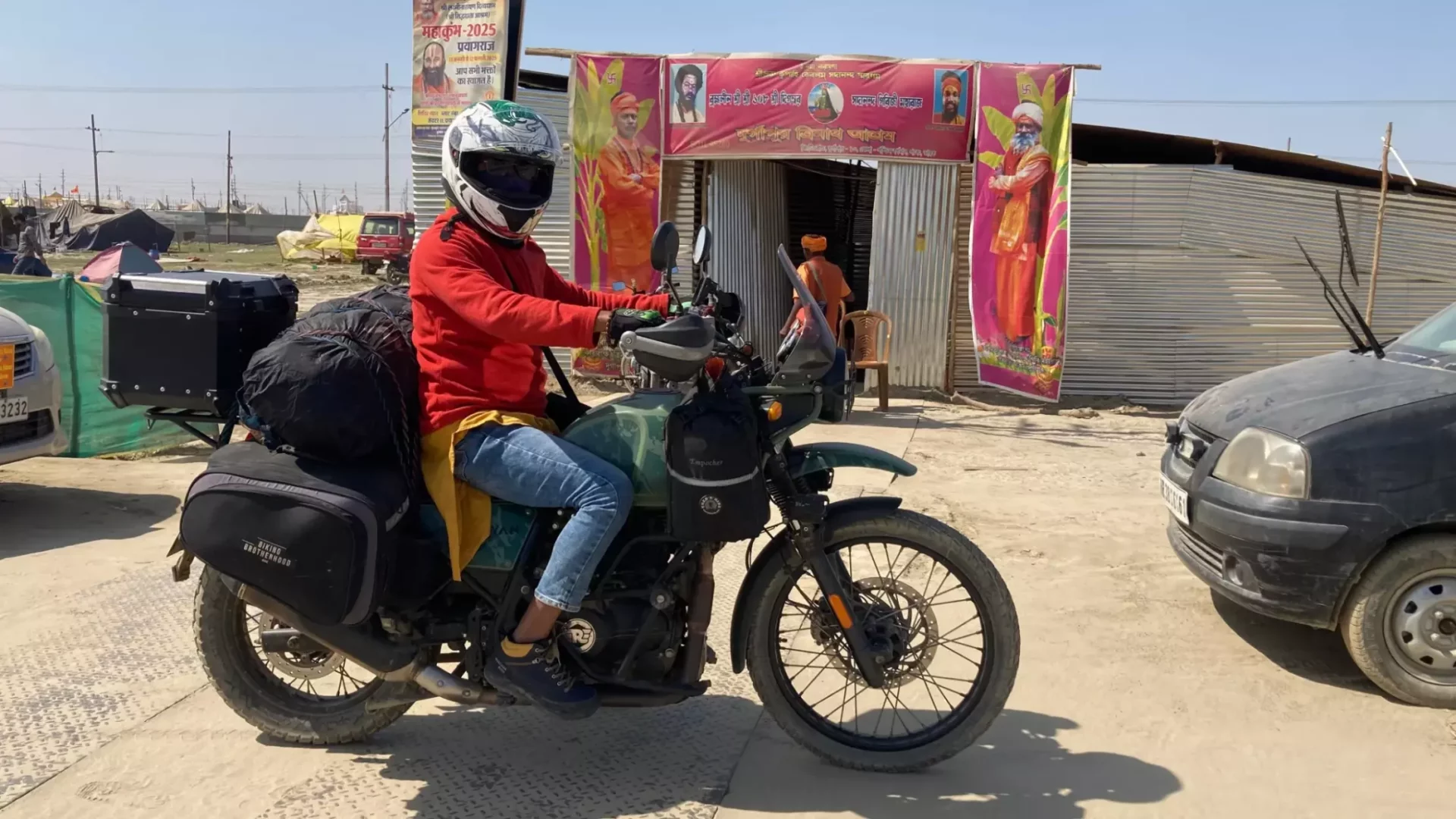
The road trip was over 700 km from my hometown, Kolkata (the City of Joy). Two days before the first holy bath, I began my journey. I love road trips because they give me the freedom to travel at my own pace, meet new people, and make new friends. This journey was no exception—I met some wonderful people along the way.
On the journey, I crossed three states with large forests, hills, and beautiful places that filled me with energy and joy. I took small halts to enjoy nature and have some food. During one such halt for lunch, I met a kind person who greeted me warmly. Before leaving for the Mela site, he gave me small gifts for my journey, which turned out to be incredibly helpful during my stay at the Mela. This was my first encounter with a stranger who was excited to see me riding to the Maha Kumbh Mela and offered me gifts for the journey. It felt like a beautiful play written by God for my experience.
I started early in the morning, hoping to reach the Maha Kumbh before late at night. But God had other plans for me. As I approached the Mela site, the thick fog and silent roads gave me goosebumps, signaling that something extraordinary was about to happen. Due to unexpected events, I arrived at our campsite at around 2:00 AM. After a few hours of rest near a hawan-kund (fireplace) due to the cold weather, I was ready to explore my first day at the Mela—the day of the first holy bath. I had no idea what awaited me, but I knew it would be an experience of a lifetime.
Arrival at the Sacred Grounds
When I woke up, the entire camp was already bustling with activity. This was my first time staying in a Naga Sages’ camp. I realized that I was the last person to wake up, having slept near the entrance, close to the Havan Kund, with my belongings kept far from me. I woke up with a smile, offered my prayers, and prepared for a new day filled with adventure.
I have already started to believe that “Life is all about adventure, whether you like it or not. But if you surrender to time, things will work according to the Supreme God. For that, you need to perform the tasks as per the demands of time.”
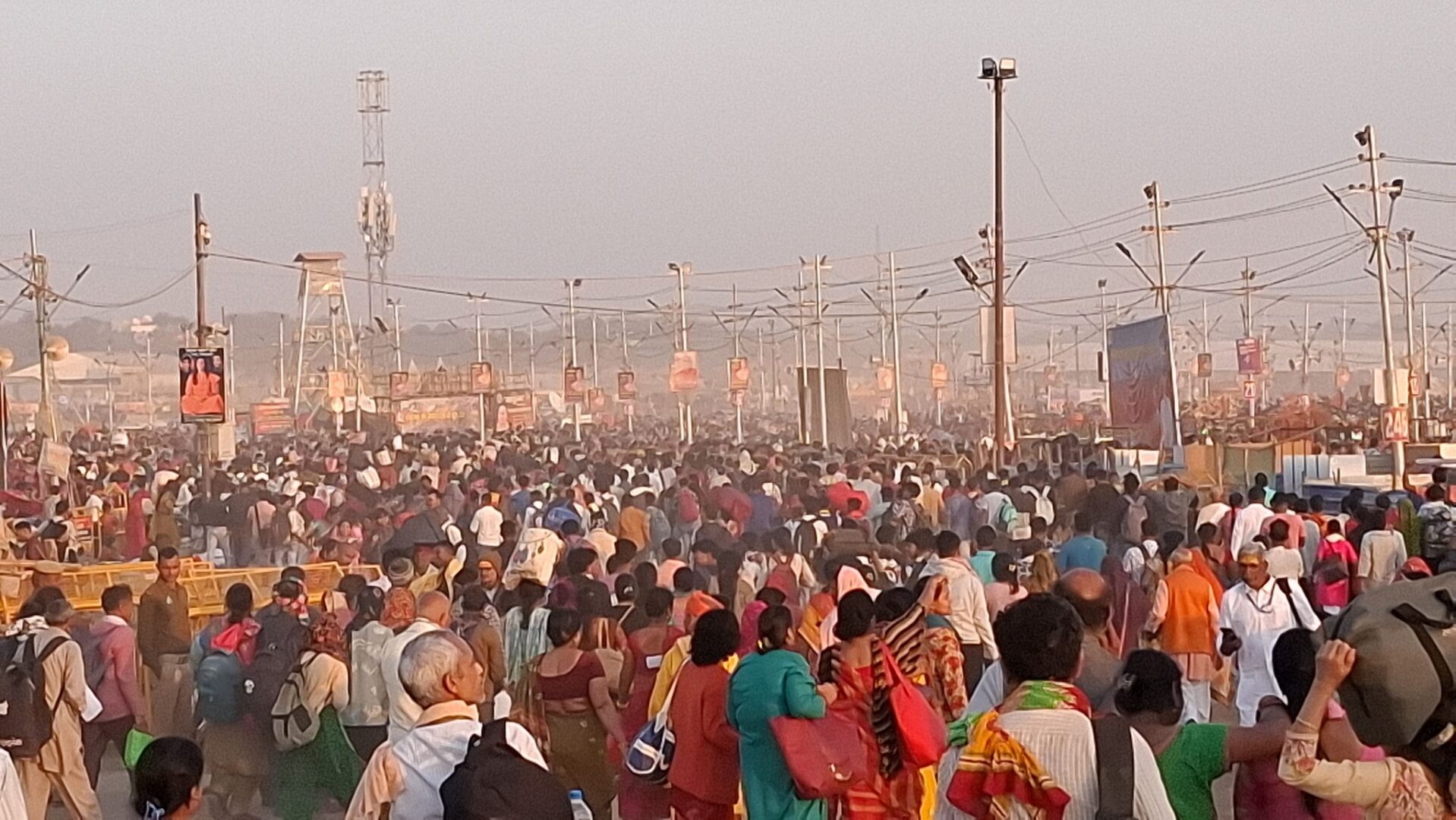
I gathered my belongings and took an early morning winter shower. Initially, I thought there would be only cold tap water, but to my surprise, the water was warm—perfect for a morning bath. It felt like another blessing from Mother Earth. Science explains that underground water remains warm, just as a mother keeps her children warm in her lap. Feeling refreshed and energized, I was ready to take on the tasks of the day.
Every morning at 7 o’clock, there was a prayer in the Naga tradition, which I had been following since last year when I spent a few days in our Ashram or sometimes at home. This was the first ritual I attended at the Maha Kumbh Mela in our Durgapur Trinath Ashram Shibir (Camp).
I started my day with some early morning tasks, including helping to serve breakfast to the monks, which is called Baalbhog. After that, I engaged in my office work until noon. Later, I was assigned to assist with lunch, known as Bhandara. It is said that feeding others is a sacred duty, and feeding monks is the holiest act. By the grace of my Guru and God, I served them wholeheartedly. Most days, I followed this routine at the campsite, balancing my office work with serving the monks. It was a busy schedule, but I found great fulfillment in it.
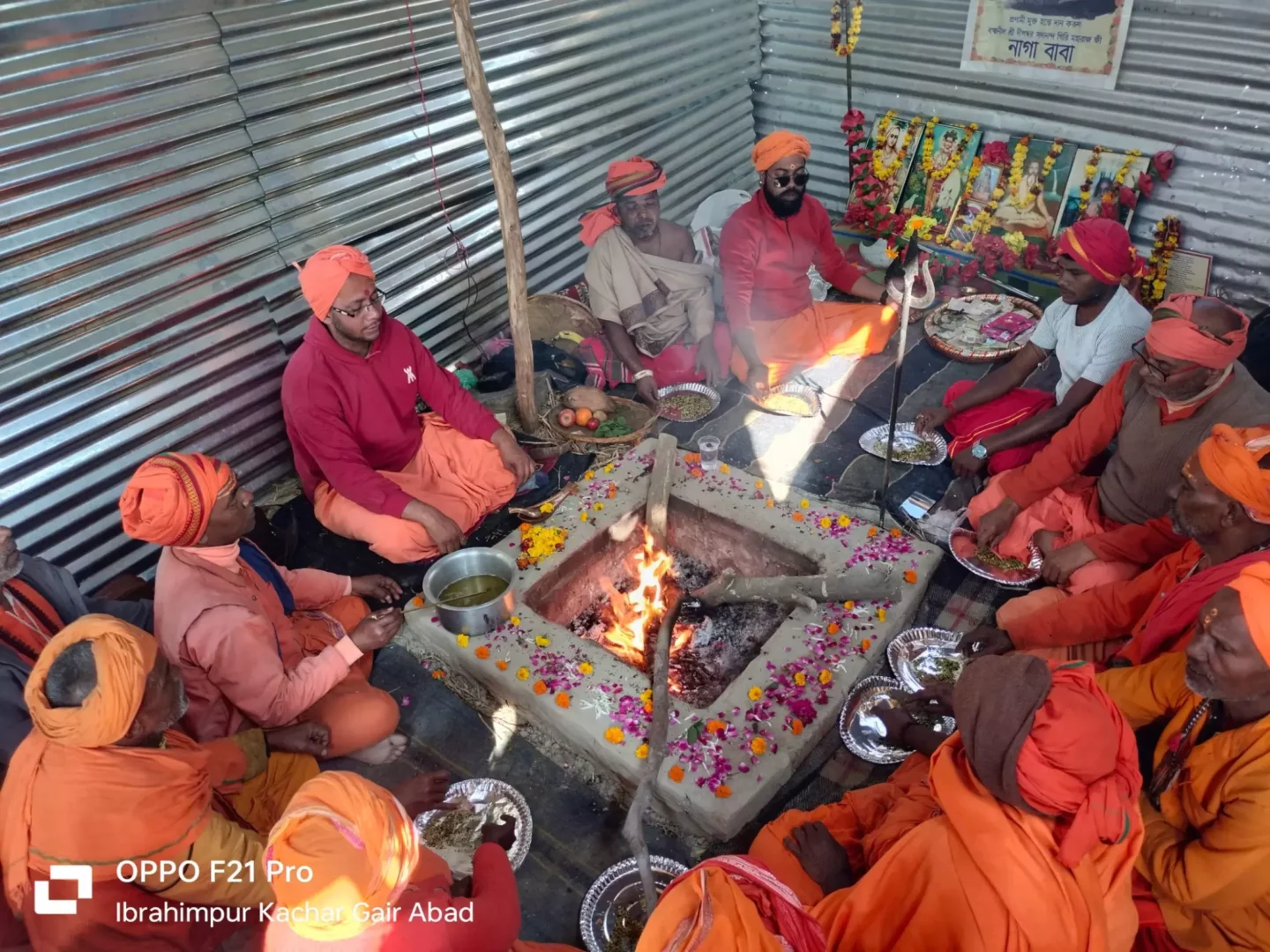
One thing I forgot to mention is that my Guru has given me the title of Brahmacharya. It means someone who is learning about life and scriptures under the guidance of his Guru for a greater purpose. According to our ancient texts, this is one of the most important stages of a person’s life. To be honest, I love my title as a Brahmacharya because I feel a lot of positive energy within me. Now, I have a meaningful way to channel this energy. When I meet other Brahmacharis, I realize they share the same experience under their Guru’s guidance. This seems to be a common practice for those on the Brahmacharya path.
Later in the evening, there was another Naga ritual, sometimes called Sandhya Aarti. After that, a meeting was held to discuss the schedule for the next day’s first Amrit Snan (Holy Bath). This was followed by Guru Bachan or Satsangh, and I was engaged in serving dinner at the Ratri Bhandara.
Guruji instructed us to wake up earlier—at 4 o’clock in the morning—and be ready to leave the campsite by 5 o’clock. Everyone had to apply Bibhuti to their entire body. The Naga monks, in adherence to tradition, were to remain unclothed except for a single white cloth covering their private parts.
Most of the monks at our campsite were in the Abadut state, meaning they had already chosen their first five Gurus for their spiritual journey. A few days later, after performing certain rituals, they would officially become Naga monks. From there, they would move to another Guru who would initiate them into the Digambar Naga Monk state—where they would abandon even the last piece of cloth, embracing complete renunciation.
For today, they remained in their Abadut state, dressed accordingly. Guruji also instructed us about our formation for the rally: the most senior Naga monks would lead in the first row, while the rest would follow in two lines behind them. With everything set, we went to bed, marking the close of my first day.
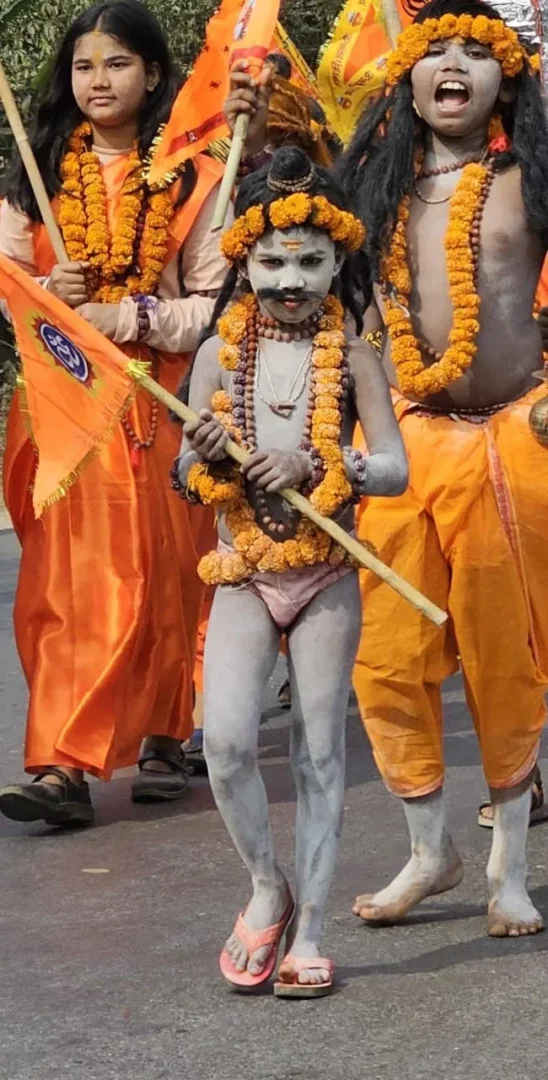
Journey Started for The First Amrit Snan – Makar Sankranti Snan
As planned, we woke up at 4 a.m. and began preparing for the First Amrit Snan. After taking a quick early morning bath with the Naga saints, I applied Bibhuti for the first time in my life. Bibhuti, or Bhasma, holds deep significance in Naga traditions. According to Naga sages and ancient scriptures, it is made from the ashes of Havan (sacred fire rituals) or from Hindu cremation sites. It is believed to provide immunity from extreme weather. Even Lord Shiva Himself adorns His body with Bibhuti as a mark of divinity.
For the first time, I felt what it meant to be one among them. And to my surprise, the Bibhuti helped me during the Naga rally before the Snan.
As we gathered at the gate, ready to leave for our first-ever Amrit Snan at the Maha Kumbh Mela—a grand event that occurs only once every 144 years—excitement coursed through my veins. Oh, I forgot to mention: I was wearing only a single saffron dhoti in the chilling 8-degree Celsius morning. At first, the cold air made me shiver, but as our rally began, the atmosphere changed. The chants of “Har Har Mahadev!” echoed in the air, filling me with an inner warmth and energy. The cold no longer bothered me.
From all directions, monks from different camps converged into a single procession, walking towards the sacred bathing site. My first-ever Kumbh Snan (holy bath) had begun. The adrenaline rushed through my veins, and I knew this moment would stay with me forever.
We all arrived at our starting point, which was our own Akhara (community), Shree Panch Dashanam Juna Akhara—the largest Naga monk community in the world, dedicated to protecting Sanatan Dharma. This point was almost 6 km away from our campsite. It was my first-ever entry into the Naga Akhara in this lifetime.
Our group consisted of about 100 monks, but inside the Akhara, it was impossible to count the heads. Everywhere, there were only Naga sages, with a few other people present (only disciples were allowed to enter the Akhara at that time). In the middle of the Akhara, there were a few temples with huge, long flags that we call Dhwaj.
Due to the massive crowd, the police had altered many public routes, but as Nagas, we had certain exemptions. The local administration had granted some relaxations to the monks.
As I stepped into our Akhara, I felt truly blessed to be among monks whose disciples are well-known worldwide. Some of them were Jagat Gurus and revered sages within the Sanatan community. Later, I realized that I would be completing my rally to the Amrit Snan Ghat alongside these great sages—individuals who have transformed many lives and guided countless young disciples. This realization filled me with a deep sense of gratitude and inspiration.
The Sacred Path to Amrit Snan
After preparing the Gods’ Palki for the Amrit Snan, all the monks were ready to begin their rally. I felt an intense energy in the atmosphere. All the Naga Sadhus looked highly energetic and enthusiastic for the rally. Everyone was chanting the holy words “Har Har Mahadev” and greeting fellow sadhus with “Om Namo Narayana” as a mark of respect.
There were two types of processions for the Amrit Snan. One was formed by Naga Sages and other monks who completed the rally on foot. The other consisted of the most prestigious sages—Jagat Gurus, Shankaracharyas, and Mahamandaleshwars—who completed the rally on a Rath (a specially decorated chariot).
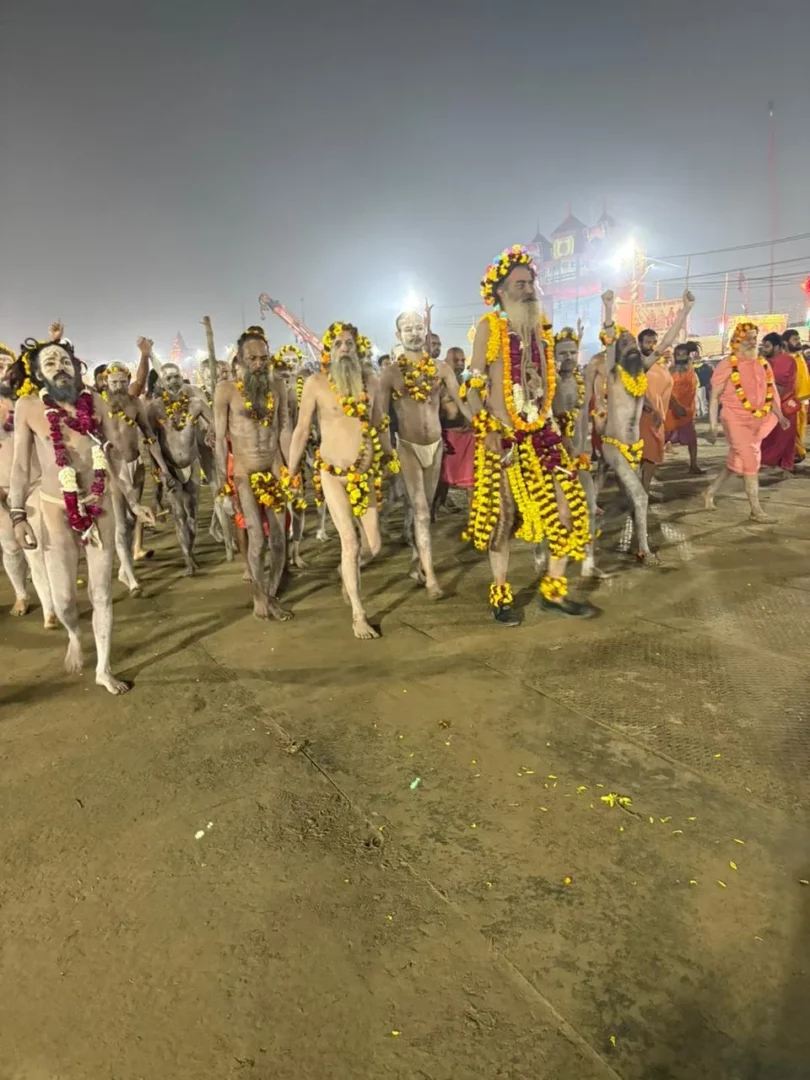
Since this was my first Kumbh Snan, I only realized these two aspects at the end of my first Amrit Snan. By God’s grace, I was fortunate to participate in both types of processions in the upcoming Amrit Snans.
The sound of countless shankhas (conch shells) was blown by the Naga Sages, signaling the beginning of the sacred journey. We took a circular round around the Dhwaj with the Gods’ Palki, marking the official start of the procession. Soon, a push-and-shove movement began as everyone tried to stay close to the Gods’ Palki, ensuring that no one moved ahead of it. The area filled with a cloud of dust as the rally gained momentum.
Since I was unfamiliar with the route or any specific details, I felt that staying within the group was the safest and best option for me. So, I instinctively joined the “Push & Stay” movement to remain part of the rally.
As we crossed the Juna Akhada gate, I saw a large presence of police and security personnel trying to maintain order. Beyond them, an enormous crowd lined both sides of the road, eagerly watching the procession. Despite the efforts of security personnel to control the crowd, some devoted disciples managed to join us. I saw many of them blending into the rally, their faces filled with devotion and excitement.
It is said that bathing alongside the Naga Sages is one of the holiest experiences of a lifetime, which is why there was an overwhelming rush to join our Naga Rally.
At the start of the journey, I was positioned near the beginning of the rally. However, as time passed, I found myself gradually moving towards the end of the Naga procession. Sometimes, I was not allowed to walk alongside the senior monks, and at other times, I simply couldn’t keep up with their pace.
Most of the devotees in the crowd were extremely excited to see us or to receive blessings from any Naga Sages. I saw some of them even crying with joy. Many were enthusiastically shouting “Har Har Mahadev” along with us, trying to walk a few steps beside us from behind the security line.
A few people were distributing dry fruits to the monks. Since I had no idea how much distance we had covered or how much was left to reach the Shahi Snan, I started feeling hungry. So, I took some dry fruits for myself.
In the crowd, I saw people of all ages, from 4-year-old children to elderly people over 90 years old. They all looked excited and eagerly awaited our arrival, throwing flowers at us as a mark of respect and devotion. I think it took around 2-3 hours to reach the bathing ghat. Along the way, I noticed that many national and international news channels were covering the event. Some journalists were even trying to get interviews with the Naga Sages. Whenever I looked up at the sky, I saw numerous drones flying above, capturing footage of our grand procession.
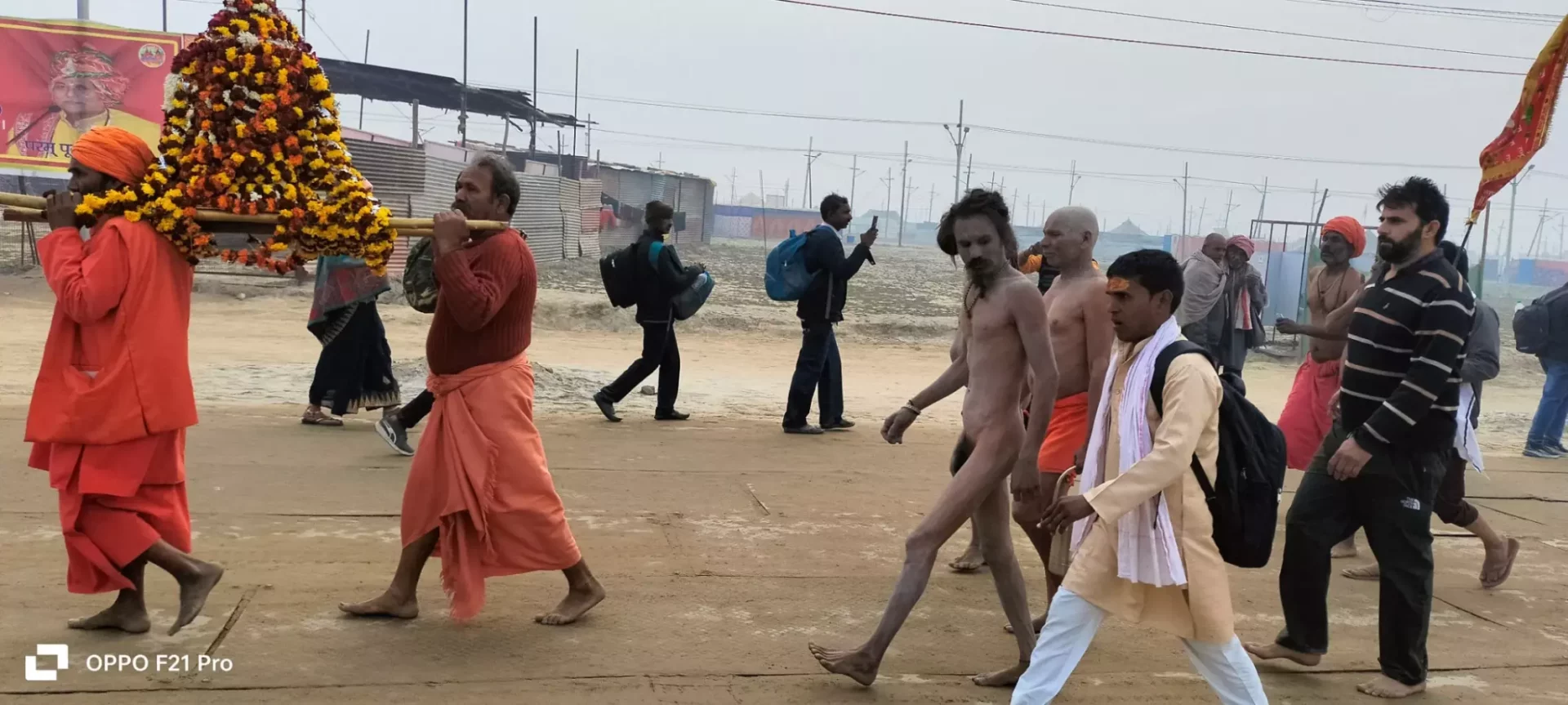
I also noticed many foreign devotees had joined our rally. Most of them were following Naga traditions, wearing saffron dhotis or langots (a single white cloth covering the private parts). Suddenly, I saw a group of 10-15 foreign women monks, who appeared to be Naga Matajis (female Naga saints). I felt deep respect for them, as this was the first time I had seen a group of women Naga saints walking with us—women who had left behind their comfortable lives in pursuit of Nirvana.
There was also a large Naga community named “Pilot Baba Shibir.” After the passing of Pilot Baba, his most devoted disciple, Sadhvi Keiko Aikawa, also known as Yog Mata, led a large group of Japanese disciples and devotees, which amazed me. The rally was a melting pot of cultures, with people from all walks of life and various corners of the world walking together in devotion.
I felt that I had reached the bathing ghat, but due to the huge crowd, sadhus were rushing in many directions. I couldn’t understand the exact path to the ghat, so I tried to follow the Nagas as well as my instincts. Walking inside or alongside such a massive crowd was not an easy task—this was the first thing I learned. It required planning and patience.
The Sacred Dip of Amrit Snan
A few minutes later, I caught my first glimpse of the ghat. Security personnel were trying to control the crowd, but it seemed like they were struggling. Naga Sages were rushing to take their sacred dip as soon as possible. I felt the weather—it was late in the morning, and the sun had not come out; instead, it hid behind the clouds. It reminded me that perhaps God was also waiting to give His blessings in the form of rain. And just before the holy bath, it happened—a gentle drizzle fell from the sky. This light rain made the moment feel even more spiritual.
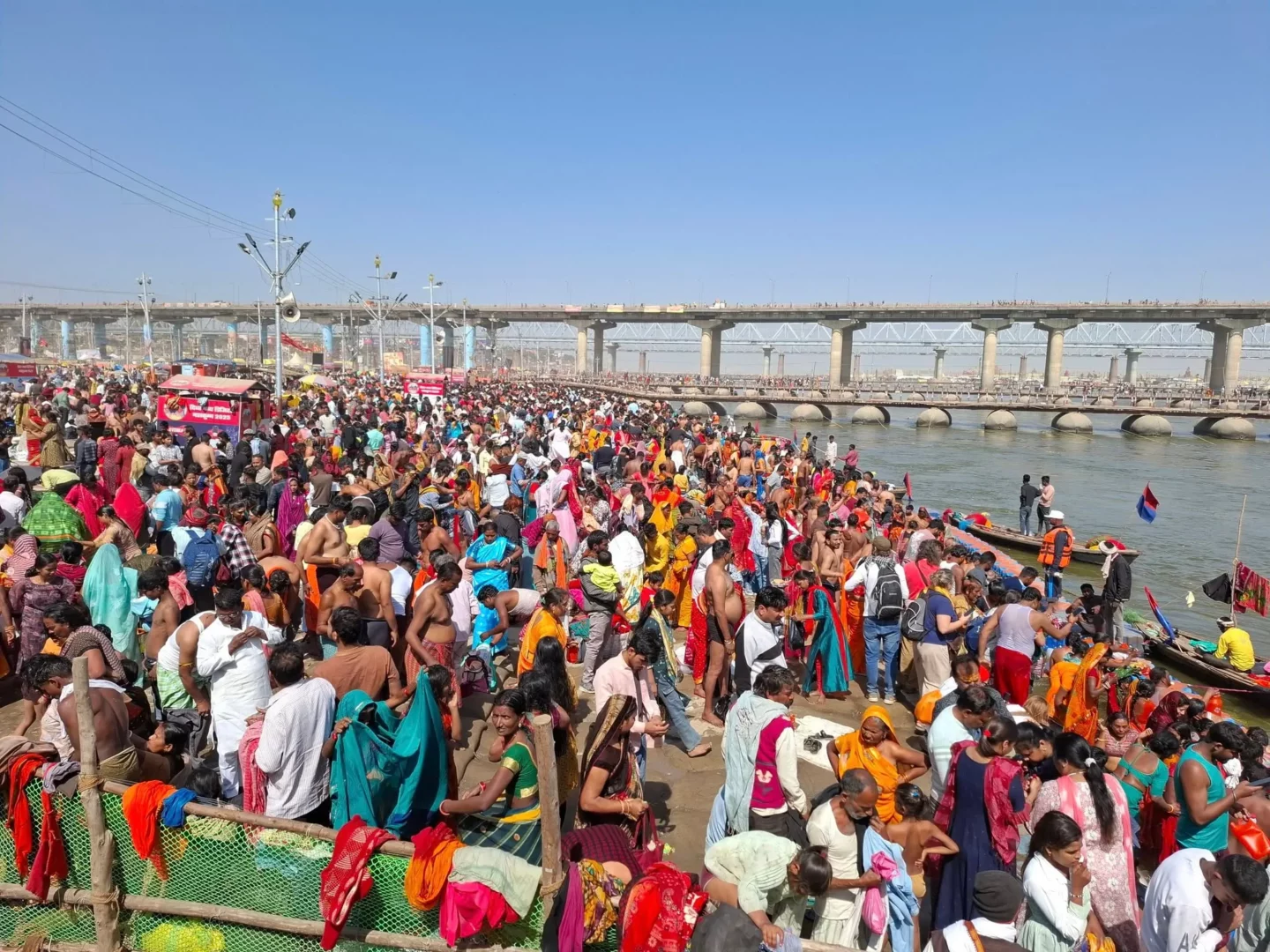
I, too, started rushing toward the banks of the River Ganges. I was slightly worried about my single piece of clothing (dhoti)—I didn’t want it to get wet due to the cold weather, especially since I had no idea how far I still had to walk. I tried to find someone with whom I could exchange my belongings for safekeeping. Looking around the ghat, I finally found someone willing to help. Without wasting any time, I handed over my dhoti and moved toward the sacred water.
I felt as if I were watching everything in slow motion—the riverbank and the sacred waters were alive with countless activities. Most devotees patiently waited for their turn to bathe, while the revered sages chanted sacred mantras, filling the air with divine energy and sanctifying the waters. Some were taking dips, fully immersing themselves in the holy river, while others performed rituals before or after their sacred bath.
Many Naga sages were washing away the Bhasam (sacred ash) in the river, while others, having just completed their ritual dip, were carefully reapplying fresh Bhasam onto their bodies. The riverbank echoed with the hum of prayers and the rhythmic splashes of water as monks and devotees alike surrendered themselves to the sacred moment.
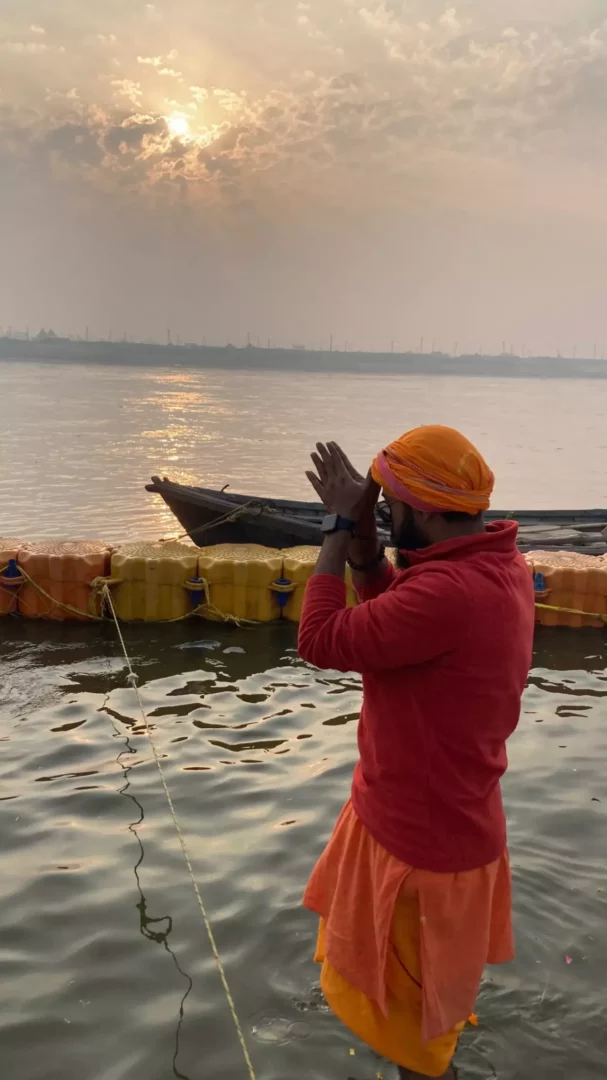
Meanwhile, security personnel worked tirelessly to manage the overwhelming crowd, urging devotees to take a quick bath and make way for others. Announcements blared from loudspeakers, continuously instructing people to leave the bank promptly after completing their holy dip, ensuring that everyone had the opportunity to participate in the sacred Amrit Snan.
Before taking my first step into the holy Ganges, I paused for a moment and prayed silently. Slowly, I stepped into the water, chanting sacred mantras. Around me, I saw many Naga Sages immersed in their ritual baths. I took an oath and then performed the traditional three dips into the Amrit waters. Afterward, I offered a Surya Namaskar (bow to the Sun) while chanting my Guru Mantras.
It all lasted maybe five minutes, but it felt like a timeless spiritual experience. Near the river, I noticed some reporters and photographers capturing the event. I tried to look up and find the sun, but it remained hidden behind the clouds.
Slowly, I emerged from the water, retrieved my clothes, and dried myself off as much as possible before beginning my return journey.
As I left the riverbank and stepped into an open space, I paused to find my way back. But wait—where was I supposed to go? I was completely speechless at the sight before me. The sheer number of incoming devotees heading toward the Amrit Snan was overwhelming. I had never seen such a massive crowd before. Every direction I looked, waves of people were moving toward the sacred waters.
A feeling of nervousness crept in. I glanced around, hoping to spot a security officer who could guide me back to my camp. I managed to find a few, but unfortunately, none of them were sure of the directions. Most had come from different parts of the state to provide security and were just as unfamiliar with the area as I was. I didn’t let this discourage me and decided to trust my instincts in navigating through the sea of people.
Crossing the river of devotees felt like wrestling my way through—a chaotic but sacred struggle. Everyone was in a hurry to return to their camps, creating bottleneck-like deadlock conditions on the roads. It took me almost an hour to push through the dense crowd and walk the first kilometer toward my campsite.
Feeling exhausted and hungry, I noticed several camps distributing free food to devotees. Without hesitation, I grabbed some and quickly ate, refueling my energy for the remaining five-kilometer journey back to my camp.
By the time I reached the campsite, it was around 1 o’clock in the afternoon. Finally, I could rest.
